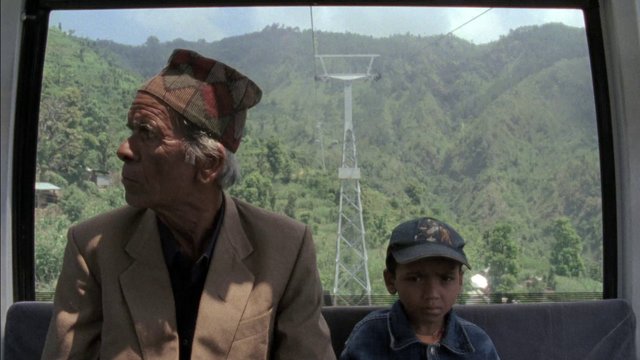If you take the cable car up to The Manakamana Temple in Nepal, it will take you eleven minutes. I know this because in Stephanie Spray and Pacho Velez’s film Manakamana we repeat the journey up and down the mountainside. Filmed under the patronage of the Harvard University’s Sensory Ethnography Lab, whose 2012 documentary Leviathan was a surprise success, Spray and Velez deposit a static camera in a cable car and leave the results to chance.
The temple itself is the sacred place of the Hindu Goddess Bhagwati. Manakamana shows pilgrims and tourists alike making the ascent and descent up the peak. There’s a wide spectrum of passengers ranging from goats to a rock band and elderly travellers. There’s also individuals and groups. It took almost two years to edit the film together, and it feels almost as much of a sociological experiment as a documentary.
Whilst the concept might sound uninviting, there’s something rather fascinating about Manakamana. Some passengers are silent (the goats are quite well behaved as well), some talkative; it’s clear the presence of a camera has brought out the garrulous side of a couple. There’s a certain meditative quality throughout as people clearly contemplate their lives to the beautiful and awe-inspiring backdrop. It also affords the viewer this opportunity as well.
Manakamana is released on DVD by Dogwoof and is out on February 9.














No Comment